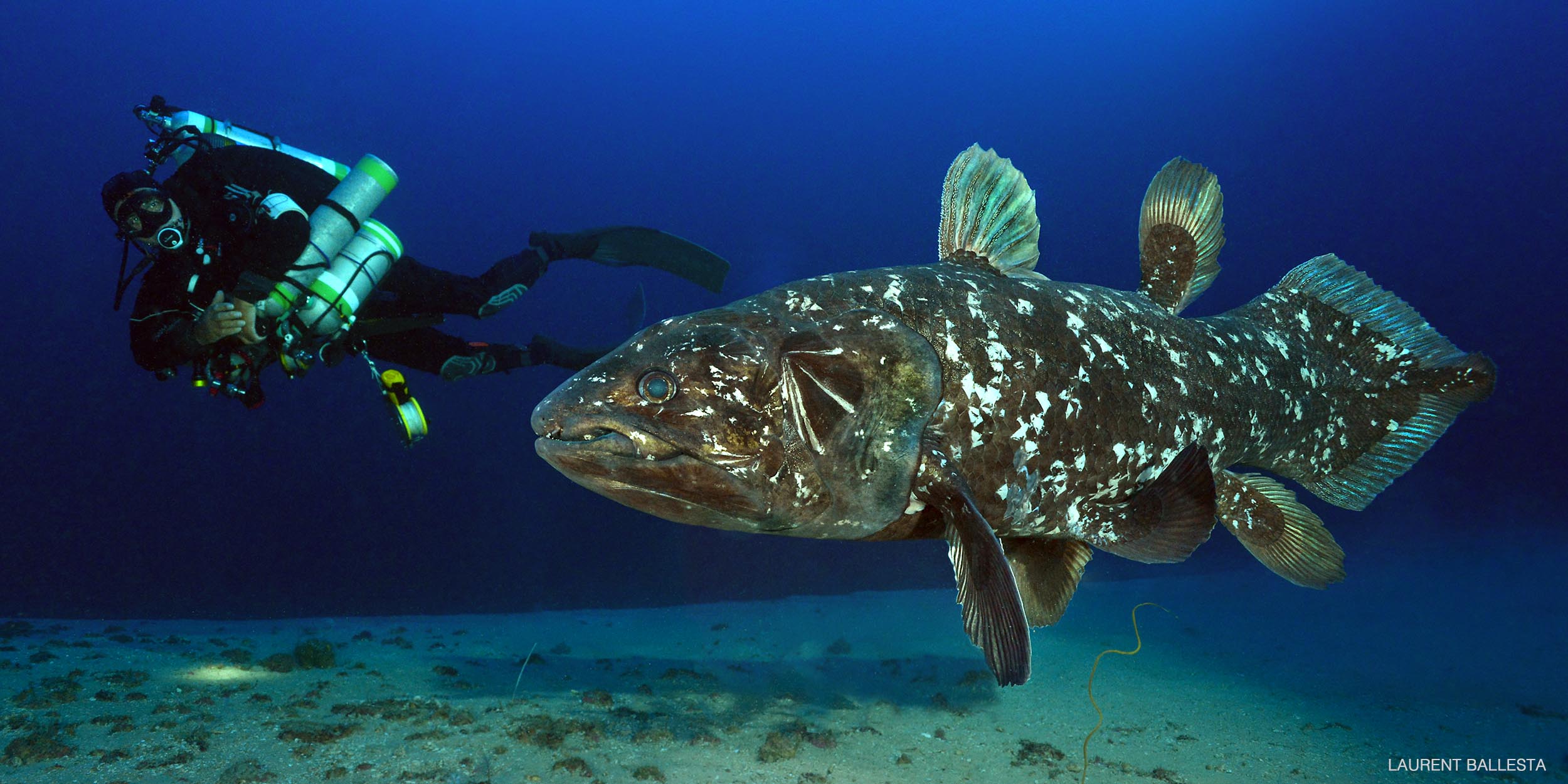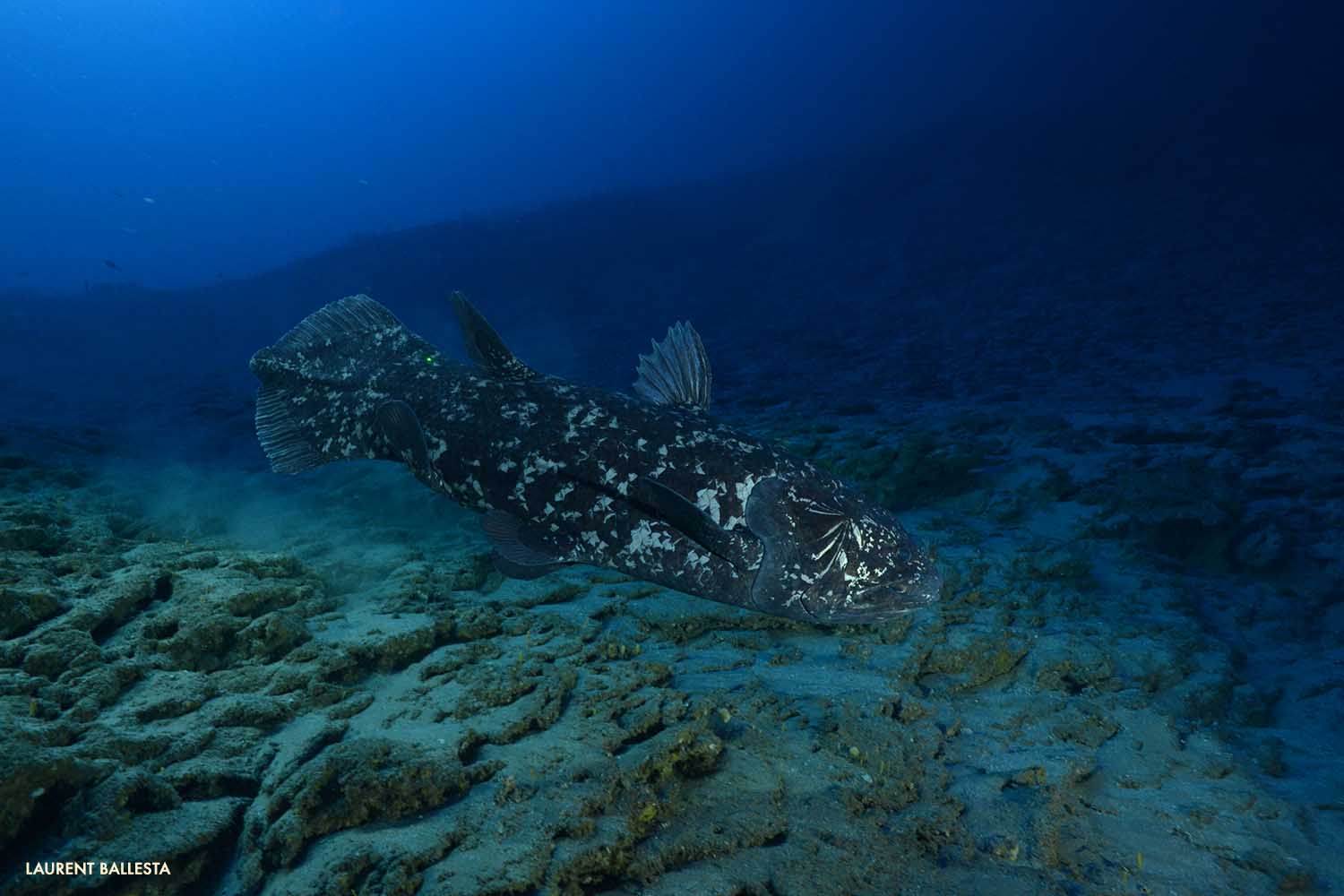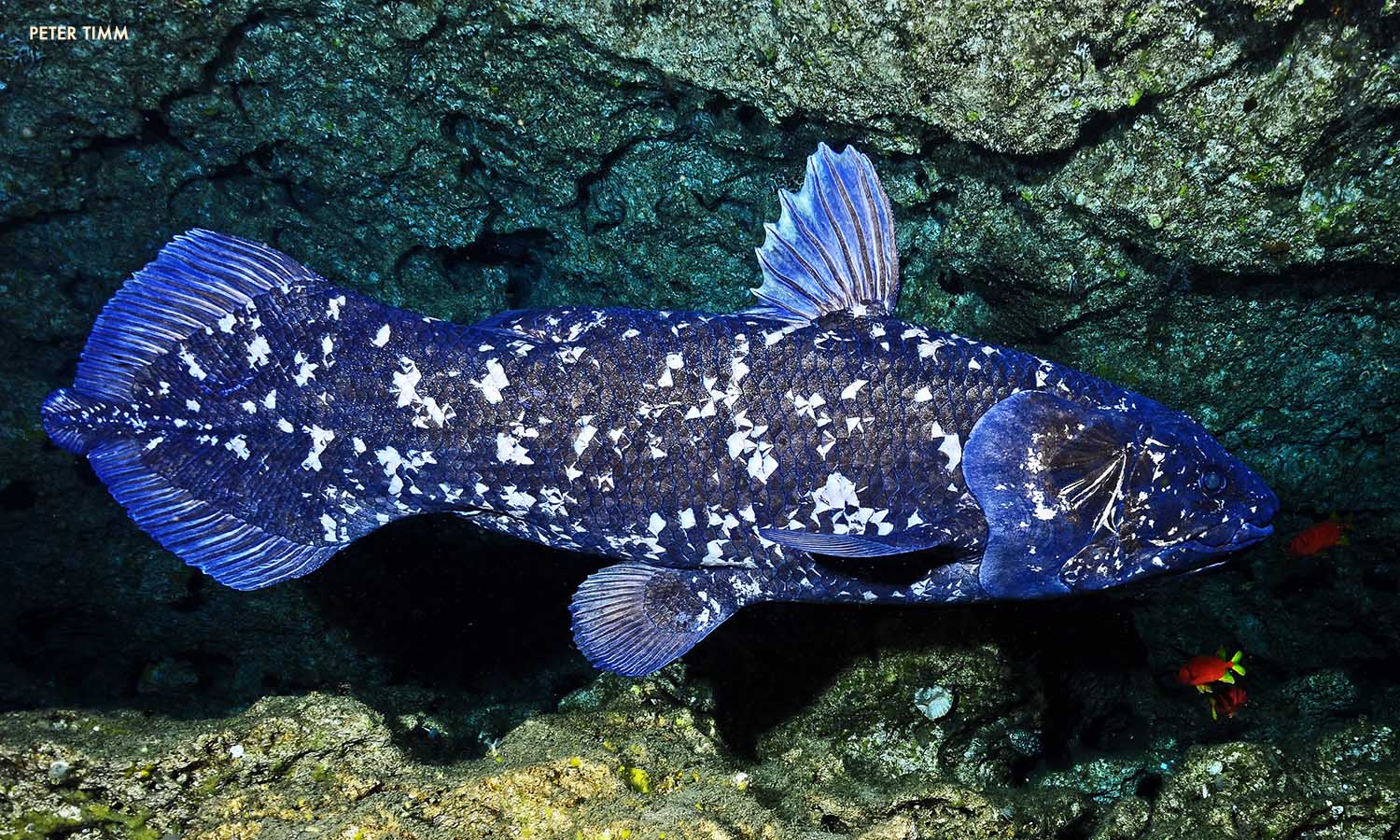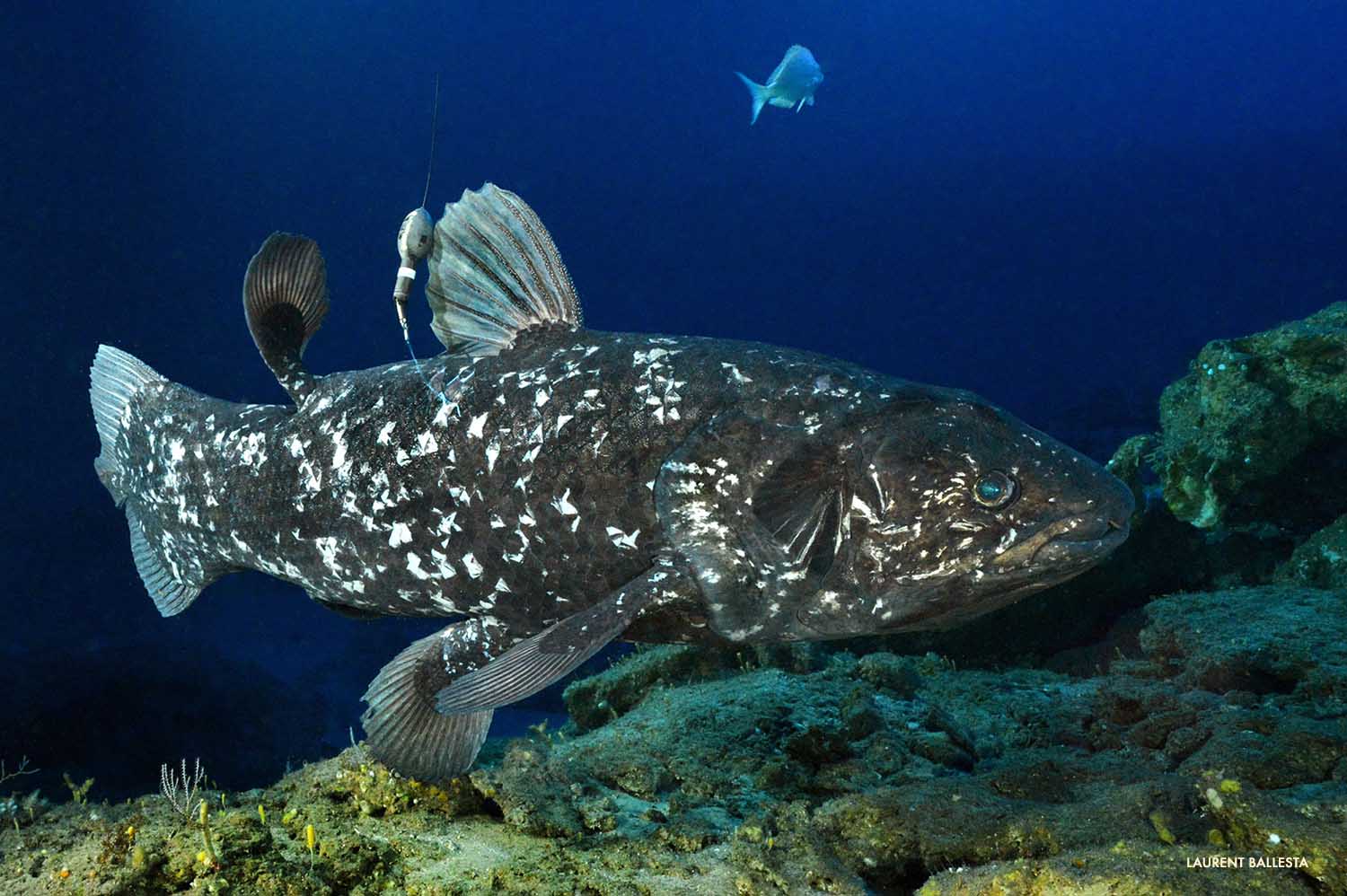Coelacanths
These ancient fish were alive during an era when dinosaurs roamed both seas and land. There are two species, the Indonesian and the West Indian Ocean coelacanth, of which the latter is found in South African waters.
Meet South Africa’s Coelacanths
Peter Timm and his two deep diving students, Peter Venter and Etienne Le Roux, were the first scuba divers to see coelacanths in their natural environment when they observed three individuals on the rocky margin of Jesser canyon at Sodwana Bay in the proposed iSimangaliso MPA in October 2000. Since then, deep divers and scientists have documented at least 30 individuals in the iSimangaliso Wetland Park, South Africa’s first World Heritage Site in northern KwaZulu-Natal. Each coelacanth is identified by its unique white spot patterns on the dark scales of this ancient group of lobe finned fishes.
Dr Kerry Sink, a scientist at the South African National Biodiversity Institute has followed the lives of these animals over the last 18 years, maintaining a catalogue that tracks sightings of each individual seen by diver, Remotely Operated Vehicle (ROV), and through the window of a yellow submarine. The Jago submersible team have documented 145 individual coelacanths in their many expeditions in the Comoros Islands where the second coelacanth known to science was reported. Sodwana’s colecanths all have names such as Jessie known from Jesser Canyon, Sidney and Twilight from Wright Canyon and Shaka and Nandi from Chaka Canyon. In 2014, scuba divers found the shallowest record of a coelacanth at 54m in a cave at the head of Diepgat Canyon known as “the box”. This large coelacanth is called Pandora.
Jessie, Individual 1
Jessie, a very large coelacanth was one of the first coelacanths photographed by deep divers in Jesser Canyon and has been seen many times in nine different years between 2002 and 2016. Female coelacanths grow to larger sizes than males. We know this from coelacanths caught accidentally by oilfish fishermen in the Comoros and more recent accidental captures in deep set shark gillnets in Tanzania.
Its Jessie’s large size at about 1.8 m that led us to think that she is a female with all male coelacanths reported to be smaller than 1.6m with females reaching a maximum size of 1.8m and 98 kg. Coelacanths give birth to live young in a style of reproduction known as ovovivipary which means that their eggs mature within the body and are nourished by a yolksac rather than a placenta. Coelacanth eggs are as about the size of an orange and babies are expected to be born at a size of about 40cm. The smallest coelacanth seen to date at Sodwana is “Tot” (Individual 30) at a size of 1 metre. “Tot” seen only once in 2013 was accompanied by Grant “Coelacanth 4” named after the expert deep diver skipper Grant Brockbank from Triton Dive Charters. Jessie and Grant have often been seen together although Jessie has been seen with 9 different individuals over the last seventeen years. Jesser was last seen by deep diver Eve Marshall on 16 March 2016.
Noah, InDIvidual 14
Noah is named for the distinct arc (semi-circle) pattern on both sides of his (or her) body. This coelacanth was first seen during the 2003 Jago submersible expedition but has been seen by divers (including famous deep diver Richard Pyle who pioneered deep decompression stops known as Pyle stops), Remotely Operated vehicle in 2005 and 2011 and other trimix teams in 2012 and 2013.
Noah was last seen by a Japanese team in July 2018 who left a camera in a known coelacanth cave overnight and captured Noah and a ragged tooth shark in the cave. Noah has a distinct white spot on his snout. He is one of 5 coelacanths to be sighted in both Jesser and Wright Canyon which are about 4km apart.
Eric, Individual 26
“Eric eyelashes” is a prettily marked coelacanth first photographed by one of the French trimix divers, Eric Bahauet, in 2009. Eric has been seen only four times but has taught us some new coelacanth secrets! Eric’s name is not just about the eyelash-like markers on the left side of “his” face or his first photographer but also Captain Eric Hunt, a central figure in the coelacanth story.
Eric Hunt alerted Professor JLB Smith to the presence of the coelacanth in the Comoros Islands after seeing his pamphlet advertising the “Hundred pound fish”. In 2013, the French dive team under the leadership of Laurent Ballesta (Andromede Oceanologie) tagged Eric with a pop up satellite tag that was recovered 9 months later 12 km north of where Eric was tagged (read more). We haven’t seen Eric since 2013 but perhaps this might be because Eric is living in a new coelacanth location that neither scientists nor divers have explored offshore of nine mile reef where his tag emerged at 1 am in May 2014. Eric ranged between 75 and 392 m depth and spent long periods at a depth of 150 m. We need to go look for caves in this depth range! Eric has been seen in three different caves in Jesser canyon.




